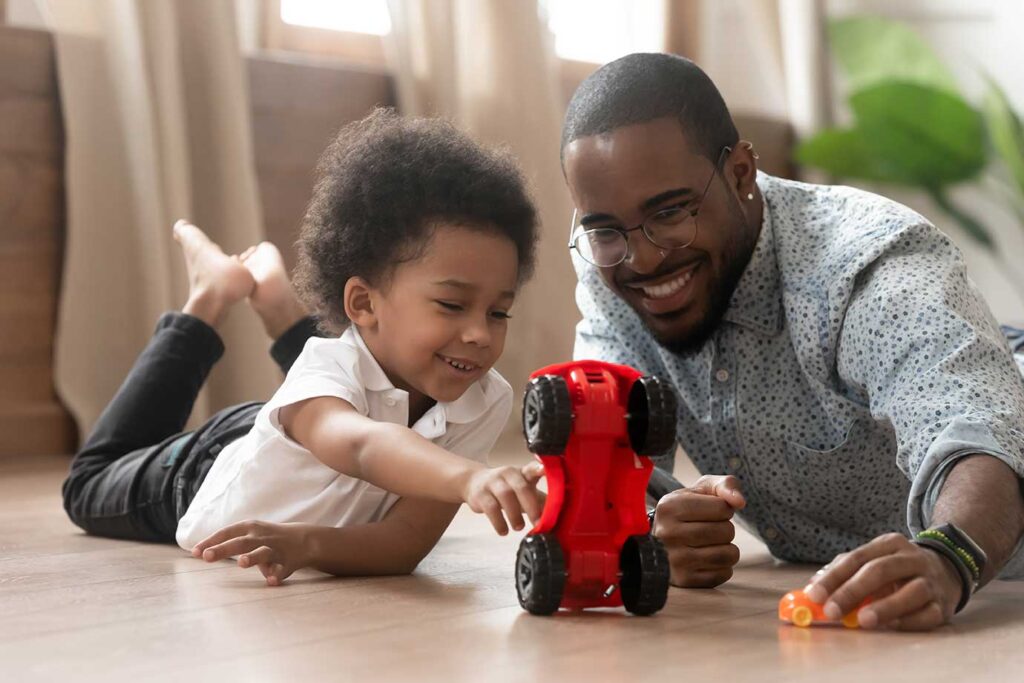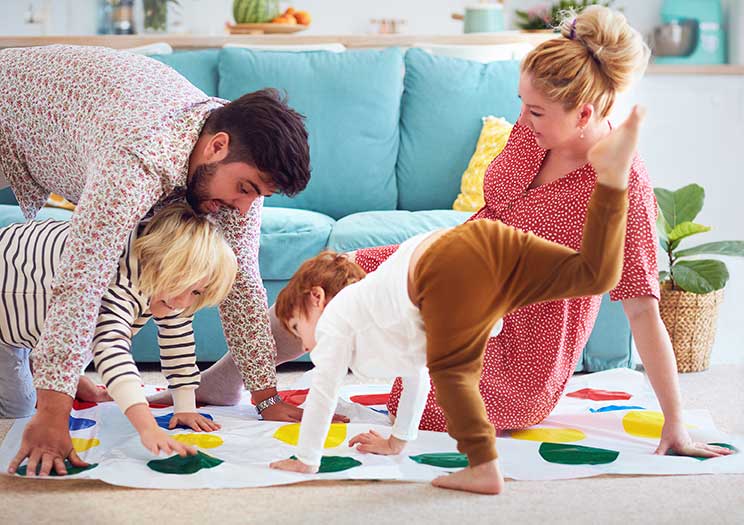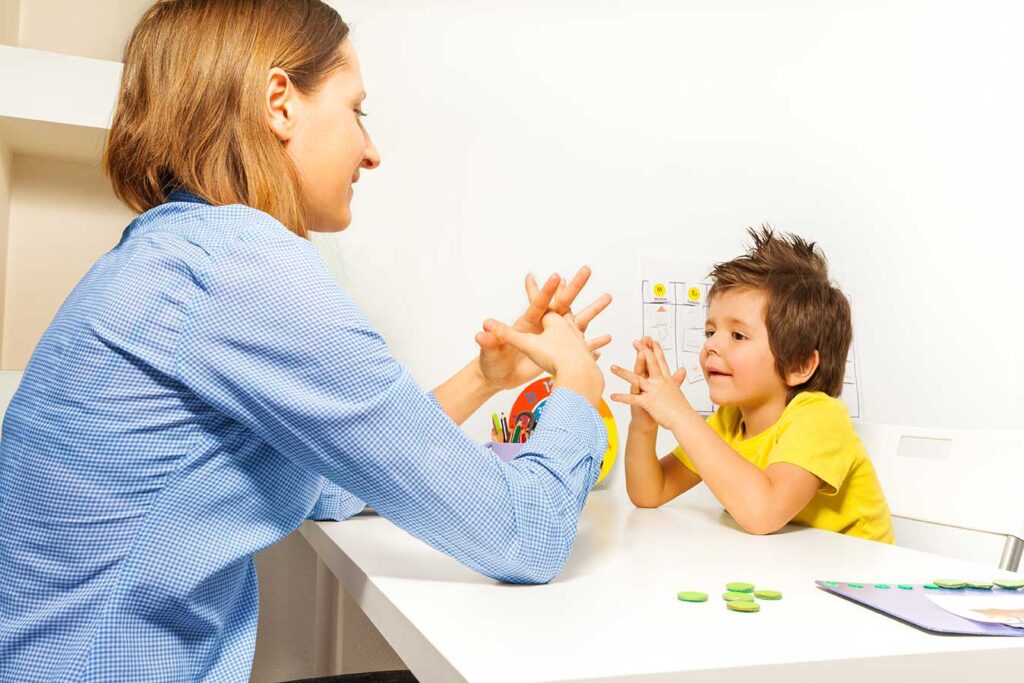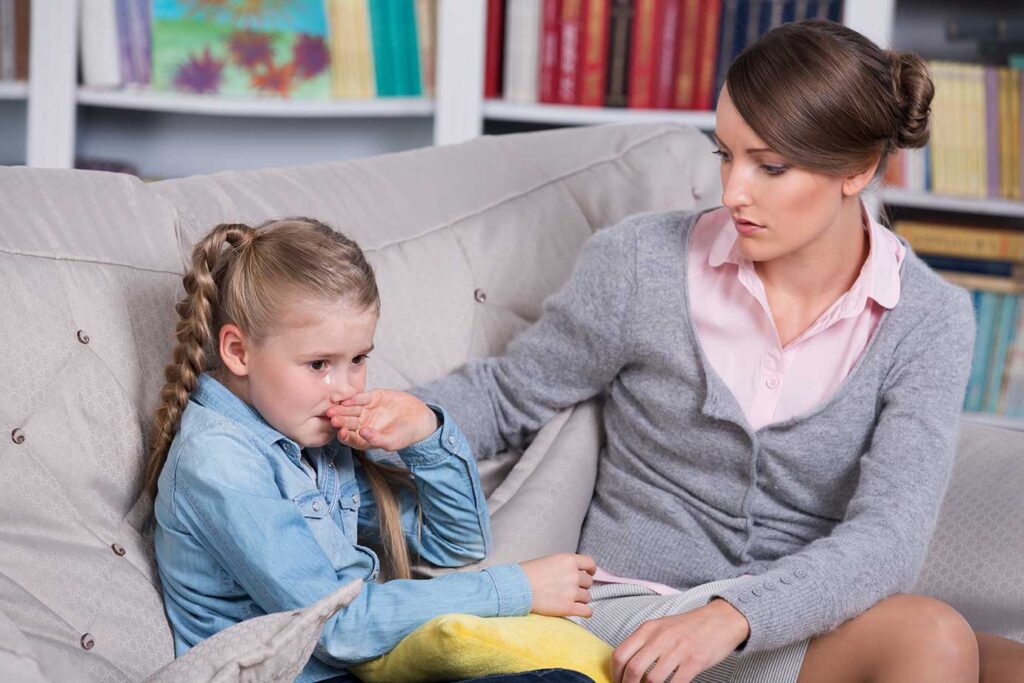DIR FLOORTIME Services
Floortime: DIR Floortime
Floortime is an intervention that is used to promote an individual’s development through a respectful, playful, joyful, and engaging process. It uses the power of relationships and human connections to promote the development of the capacities for self-regulation, engagement, communication, shared social problem solving, and creative, organized, and reflective thinking and reasoning. It is an evidence-based approach to promoting human development that is used with children especially those on the autism spectrum.

Floortime is an intervention that is used to promote an individual’s development through a respectful, playful, joyful, and engaging process. It uses the power of relationships and human connections to promote the development of the capacities for self-regulation, engagement, communication, shared social problem solving, and creative, organized, and reflective thinking and reasoning. It is an evidence-based approach to promoting human development that is used with children especially those on the autism spectrum.


Children with ASD require intensive intervention to help them overcome the aspects of ASD that can be disabling. Left alone, they will often not initiate interaction unless they need something. When they are left alone too much, they are missing out on the opportunity to discover the joys of a shared world. Therefore, children with ASD can benefit from “Floortime all the time and everywhere”.

Children with ASD require intensive intervention to help them overcome the aspects of ASD that can be disabling. Left alone, they will often not initiate interaction unless they need something. When they are left alone too much, they are missing out on the opportunity to discover the joys of a shared world. Therefore, children with ASD can benefit from “Floortime all the time and everywhere”.
DIR/Floortime is another metodology for children with autism, and can be used in conjunction with ABA therapies. The goal is for adults to help children expand their “circles of communication.” They meet the child at their developmental level and build on their strengths. Therapists and parents engage children through the activities each child enjoys. They enter the child’s games. They follow the child’s lead.

DIR/Floortime is another metodology for children with autism, and can be used in conjunction with ABA therapies. The goal is for adults to help children expand their “circles of communication.” They meet the child at their developmental level and build on their strengths. Therapists and parents engage children through the activities each child enjoys. They enter the child’s games. They follow the child’s lead.

Six Key Milestones of Floortime
Floortime aims to help the child reach six key milestones that contribute to emotional and intellectual growth:
- Self-regulation and interest in the world
- Intimacy, or engagement in relationships
- Two-way communication
- Complex communication
- Emotional ideas
- Emotional thinking
Therapists teach parents how to direct their children into more and more complex interactions. This process, called “opening and closing circles of communication,” is central to the Floortime approach.


Floortime does not work on speech, motor or cognitive skills in isolation. It addresses these areas through its focus on emotional development.
Overall, this method encourages children with autism to push themselves to their full potential. It develops “who they are,” rather than “what their diagnosis says.”
All Medicaid plans must cover treatments that are medically necessary for children under the age of 21. If a doctor recommends Floortime and says it is medically necessary for your child, Medicaid must cover the cost.
| Core Method | |
|---|---|
| Strategies to Promote Social-Emotional Development | Understanding and Addressing Individual Differences in Processing Profiles |
| Learning to attend to cues, determine and meet the current stage of social-emotional capacity in any moment, then move the child or teen up the developmental ladder in each interpersonal interaction. | Observing and using children’s individual differences in sensory, motor, visual, auditory, and language processing capacities. |
| Age | Gross Motor | Fine Motor | Language/Cognitive | Social |
|---|---|---|---|---|
| 1 month | Moves head from side to side when on stomach | Strong grip | Stares at hands and fingers | Tracks movement with eyes |
| 2 months | Holds head and neck up briefly while on tummy | Opens and closes hands | Begins to play with fingers | Smiles responsively |
| 3 months | Reaches and grabs at objects | Grips objects in hands | Coos | Imitates you when you stick out your tongue |
| 4 months | Pushes up on arms when lying on tummy | Grabs objects — and gets them! | Laughs out loud | Enjoys play and may cry when playing stops |
| 5 months | Begins to roll over in one or the other direction | Is learning to transfer objects from one hand to the other | Blows “raspberries” (spit bubbles) | Reaches for mommy or daddy and cries if they’re out of sight |
| 6 months | Rolls over both ways | Uses hands to “rake” small objects | Babbles | Recognizes familiar faces –caregivers and friends as well as family |
| 7 months | Moves around –is starting to crawl, scoot, or “army crawl” | Is learning to use thumb and fingers | Babbles in a more complex way | Responds to other people’s expressions of emotion |
| 8 months | Sits well without support | Begins to clap hands | Responds to familiar words, looks when you say his name | Plays interactive games like peekaboo |
| 9 months | May try to climb/crawl up stairs | Uses the pincer grasp | Uses the pincer grasp | Uses the pincer grasp |
| 10 months | Pulls up to stand | Stacks and sorts toys | Waves bye-bye and/or lifts up arms to communicate “up” | Learns to understand cause and effect (“I cry, Mommy comes”) |
| 11 months | Cruises, using furniture | Turns pages while you read | Says “mama” or “dada” for either parent | Uses mealtime games (dropping spoon, pushing food away) to test your reaction; expresses food preferences |
| 12 months | Stands unaided and may take first steps | Helps while getting dressed (pushes hands into sleeves) | Says an average of 2-3 words (often “mama” and “dada”) | Says an average of 2-3 words (often “mama” and “dada”) |
| Capacity | |
|---|---|
| Regulation and Attention: Attaining a Calm, Alert, Attentive State | ATTUNING: Understanding the primary importance of a calm, alert state before expecting anything further in a given moment or in their overall growth trajectory. |
|
Capacity:
Social Engagement: Getting Involved and Connected |
CONNECTING: Facilitating the component parts of social engagement, including social interest, pleasure, mutual gaze, gestures, attachment, facial affect, initiating and responding to joint attention, clarity of bids, peer and sibling bonding, and more... |
|
Capacity:
Reciprocal Social Interaction: Initiating and Responding Purposefully |
RESPONDING: Supporting the growth of mutuality, reciprocity, and initiative. |
|
Capacity: Complex Communication: Using Gestures and Words to Solve Problems Together |
EXPANDING: Instigating extended communication to pave the way for social cooperation and social problem solving. |
| Capacity: Symbolic Play: Creating and Using Ideas | PRETENDING: Prioritizing the formation of symbols, ideas, and narrative to foster emotional and cognitive growth. |
|
Capacity: Emotional Thinking and Logical Thinking: Making Sense of Oneself, Others, and the World |
CHALLENGING: Providing opportunities for understanding emotions and for building bridges between ideas to make sense of the world and develop insight, empathy, judgement, etc. |
| Capacity: Complex Thinking: Multicausal, Gray Area, and Reflective Thinking | REFLECTING: Helping children and adolescents to think with more precision, nuance, and subtlety about the self, others, and the world. |
Differences in the underlying values and principles of ABA and Floortime (adapted from https://www.icdl.com)
 |
|